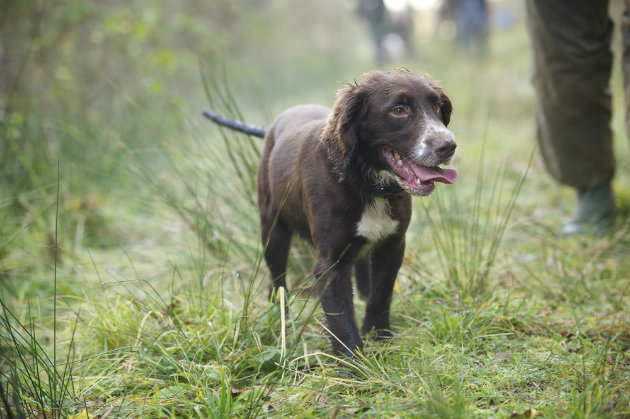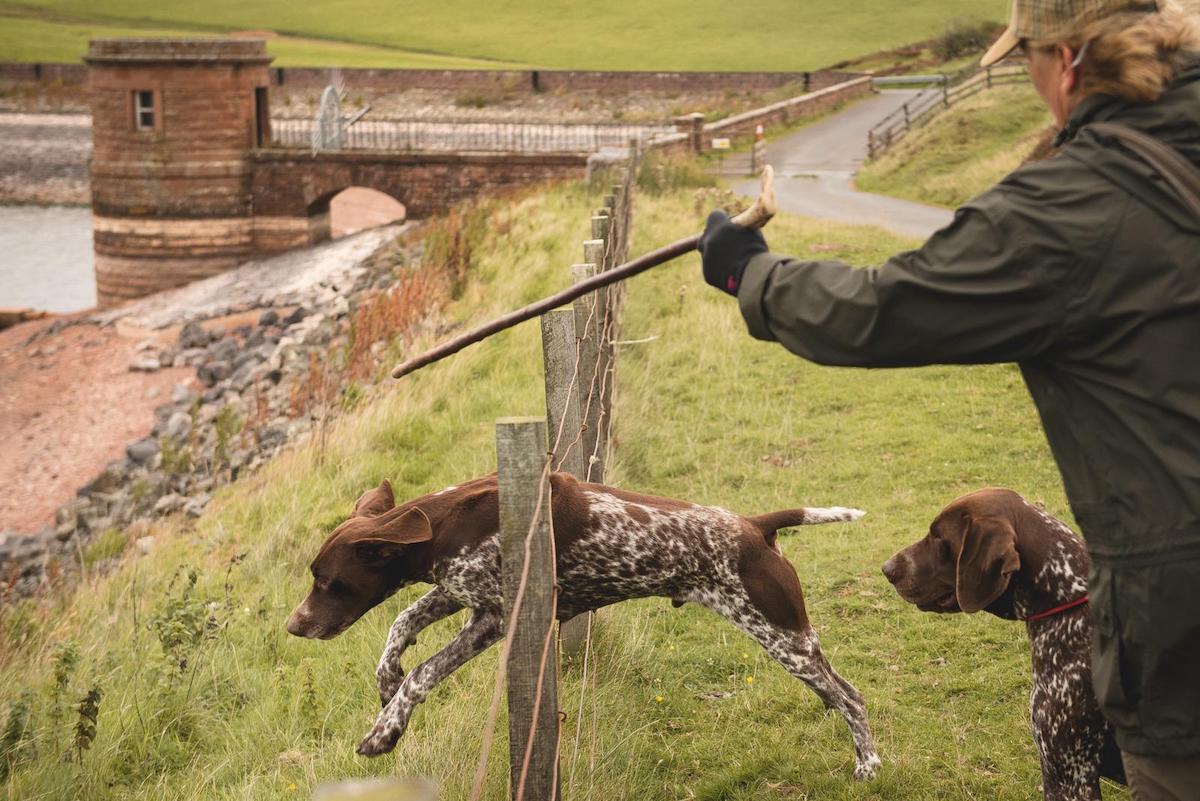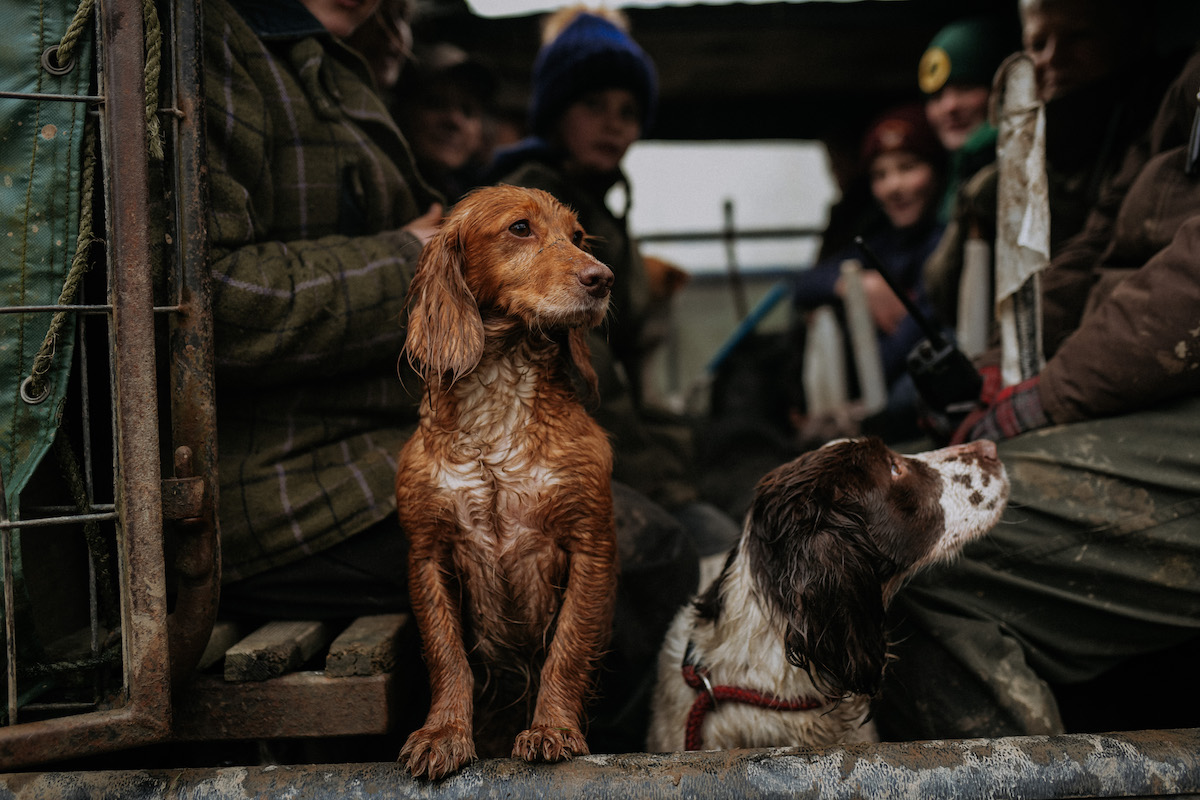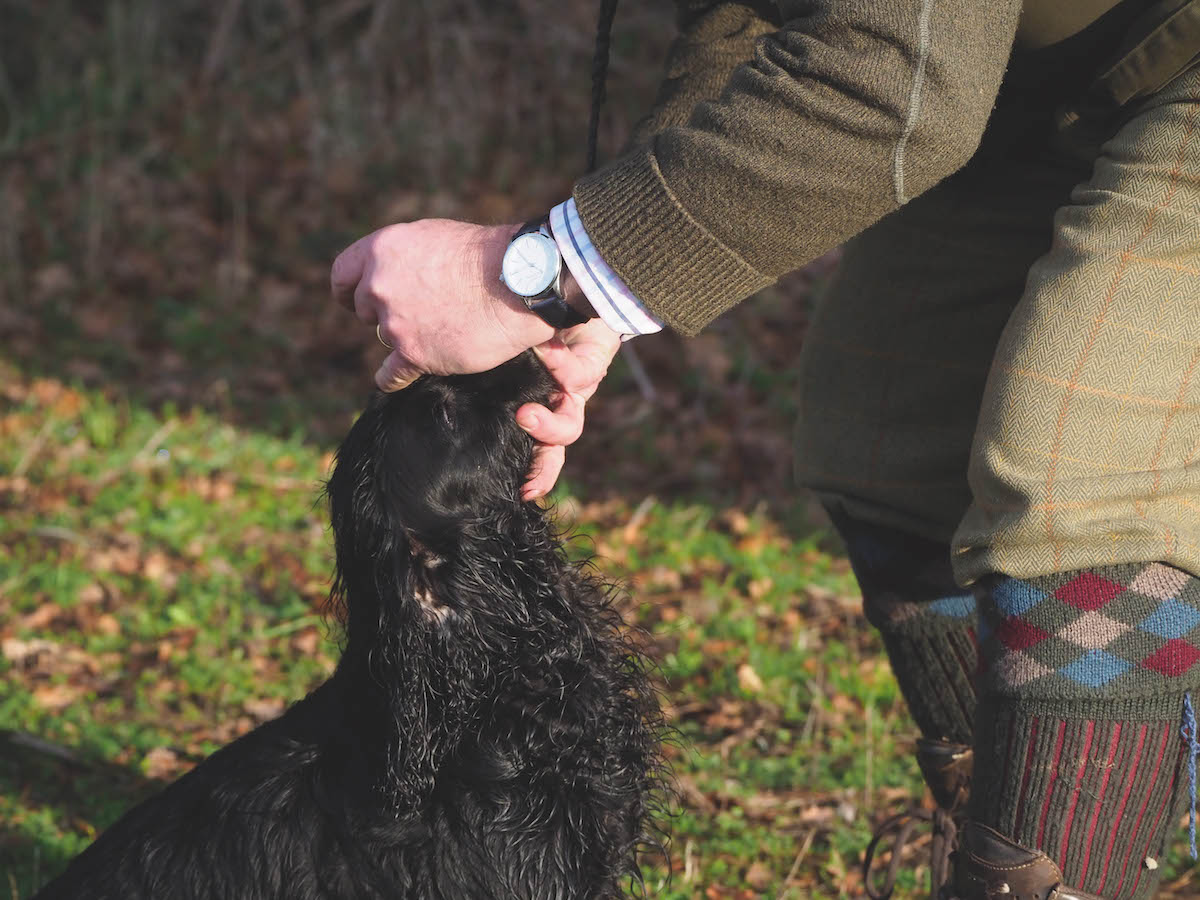BARF diet for dogs – the risks and benefits
David Tomlinson is a fan of the BARF (bones and raw food) diet for his dogs

Dogs self-medicate by eating grass
Bones and raw food for dogs
I’ve long been an advocate of feeding dogs as natural a diet as possible, which means raw food and vegetables.
I was convinced by an interview I did 15 years ago with holistic vet Dr Nick Thompson.
I feed a raw chicken wing for breakfast, and (commercially packaged) raw meat with boiled rice and vegetables for supper. I often use salmon oil to make chopped kale, say, more palatable. This is a diet that has worked well for my dogs and kept them healthy.

Raw, meaty bones can be an excellent way of keeping a dog’s teeth clean
A raw meat based diet
However, many in the veterinary business are unconvinced of the merits of feeding raw or what is often known as a BARF diet (bones and raw food). Recent research undertaken in Holland, at the Faculty of Veterinary Medicine at Utrecht University, suggests that what it calls a raw-meat-based diet (RMBD) has dangers that most owners have never considered.
The key findings, published in Vet Record in January 2018, showed that “commercial raw-meat-based diets may be contaminated with a variety of zoonotic bacterial and parasitic pathogens that can not only result in infection and disease… but also pose a risk to public health”. The study looked at 35 commercial frozen RMBDs from eight most commonly fed brands. Unless you are a veterinary scientist the findings might not mean much to you. For example, “the average quantitative scores for aerobic bacteria were 2.3 x 10(5) colony forming units (cfu)/g, and in two products it exceeded 1.0 x 10(6) (cfu)/g”.
Rather than give you more examples, I will quote instead the research comment in Vet Record: “The number of unsubstantiated claims [about RMBDs] on social media has contributed to the positive attitude of pet owners towards RMBDs… Statements found on social media have not been analysed sufficiently enough to withstand scientific scrutiny and veterinarians are rarely consulted about RMBDs by owners. Thus a lot of pet owners might underestimate the danger of the transmission of pathogens through RMBDs… raw meat can be an important source of parasites, bacteria and viruses.”
Apparently numerous life cycles of heteroxenous parasites — having more than one obligatory host — depend on the uptake of raw or undercooked animal-source protein by carnivores. “Dogs that have ingested contaminated organs shed infectious eggs and when people ingest these eggs they may develop a cystic echinococcosis which is hard to treat and possibly fatal.”
Killing parasites
It is enough to persuade anyone to ditch the raw meat and reach for the sack of dried dog food. However, for those who, like me, still believe that feeding raw is better for a dog’s health than the alternatives, there are some recommendations. “Pets… living in the environment of people with a weakened immune system should not be fed RMBDs. Ideally, dogs should not run free on pastures, especially those dogs that are fed RMBDs, because their faeces may contain parasites harmful to livestock.” In addition, RMBDs “should always be frozen at -20°C for three days before feeding to kill parasites”, though “bacteria will not be killed by the freezing process”.
BARF diet – risks and benefits
As with so many things in life, you have to balance risks with gains. I am convinced that the benefits of feeding a raw BARF diet outweigh the risks and disadvantages. However, I do believe that it is important to be aware of the risks, and to do one’s best to reduce them, if not avoid them altogether.
The raw meat I use comes from one of the leading commercial suppliers and is frozen when I buy it. I would be cautious about feeding fresh, raw meat from an unknown source.

Many packs of foxhounds are fed on raw flesh
Is a BARF diet just a trendy fad?
Reading the Vet Record comment, you are left with the feeling that feeding raw, BARF or RMBD is a trendy new idea, and that social media is partially responsible for its popularity. However, I think we should remember that feeding raw has a far longer history than feeding dried or canned food, which has only been around for not much more than half a century. There are packs of foxhounds that have been fed nothing other than raw flesh and a bit of biscuit for generations, yet they are among the healthiest of animals. Also, foxhounds hunt across pastures with livestock with no obvious problems.
Vet Neil McIntosh advises:
- The argument goes that centuries ago wild dogs fared better than our current pets, but that is nonsense. They didn’t live as long. They were less evolved to digest carbohydrates. Steenkamp and Gorrel investigated the skulls of African wild dogs who ate a pretty natural diet of antelope: 41 per cent had periodontal disease; 83 per cent had teeth wearing and 48 per cent had fractured teeth, which are painful and debilitating.
- Raw diets are likely to be deficient in calcium, phosphorus, potassium and zinc but have an excess of Vitamin D, which can be dangerous, especially to puppies. Contrary to popular belief, feeding raw bones can cause oesophageal, gastric and intestinal foreign bodies.
- Be careful about contaminating the family food.
- Raw meat diets may contain parasites and bacteria that can cause illness in humans and animals.
- Pets used for therapeutic purposes and pets living in the environment of people with a weakened immune system (for example, the elderly, the ill and those on chemotherapy) should not be fed raw meat.
- Dogs fed raw should not be allowed to run free on pasture ground, as their faeces may contain parasites that are harmful to livestock.
- Raw meat diets should be frozen at -20 degrees for at least three days in order to kill parasites. (Most domestic freezers cannot achieve this temperature.) And remember, bacteria will not be killed by the freezing process and may be abundant in the liquid that runs from raw meat as it defrosts, making hygiene difficult.
Feeding dogs: before or after exercise?
Feeding dogs – before or after exercise? So should you feed your dog before or after a walk? There is…
Why raw chicken wings are perfect for dogs
Raw chicken wings for dogs – but never cooked If you’re looking for a healthy treat for your hard working…
Should you switch your gundogs to a BARF diet?
Q: I have been considering switching my dogs to a raw diet. A butcher whom I shoot with has offered me a quantity of turkey carcasses that have had the breasts removed as more people this year seem to be opting for boned-out turkey roasts. I may also be able to secure a long-term supply of chicken carcasses and meat trimmings. Is this a good opportunity for me?
Shooting Times contributor Jeremy Hunt answers: Raw feeding is increasingly popular. Some dog owners feed 100% raw diets, while others give one meal a day of raw food. But you need to be mindful of any risk of contamination of the carcasses before they reach you and to know how long they have been unrefrigerated. This is important and even more so if you are to continue with this supply in the warmer months. I know several people who source their supply from butchers and have never had any problems, but it is essential to maintain strict hygiene standards for storage at home and when you feed. Equally, your supplier should be aware of the standards you require to avoid any health issues. They need to handle and store the food with care and not simply treat it as a waste product. Salmonella is one of the big risks when dealing with raw waste meat and bones from butchers. There are many excellent companies now offering a wide range of raw foods (deep frozen) that enable you to feed this type of food with confidence.










